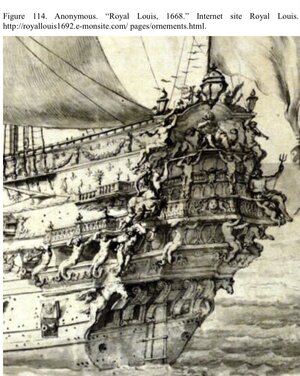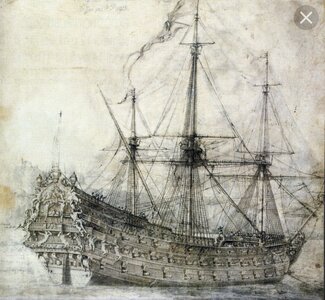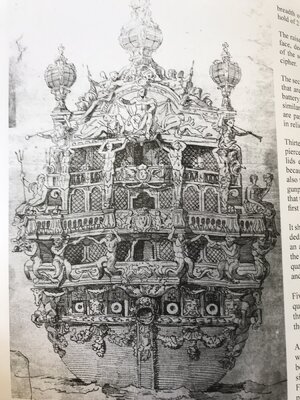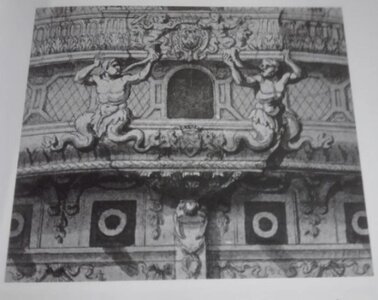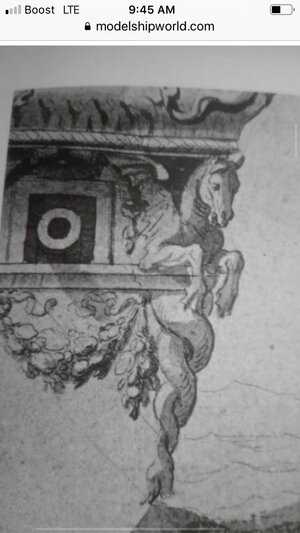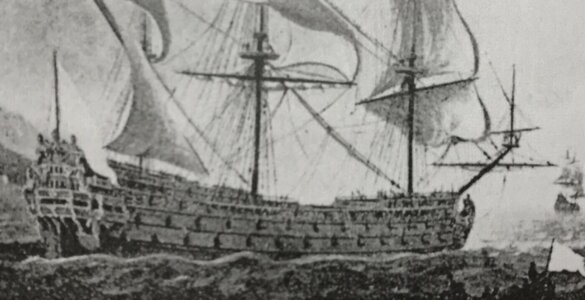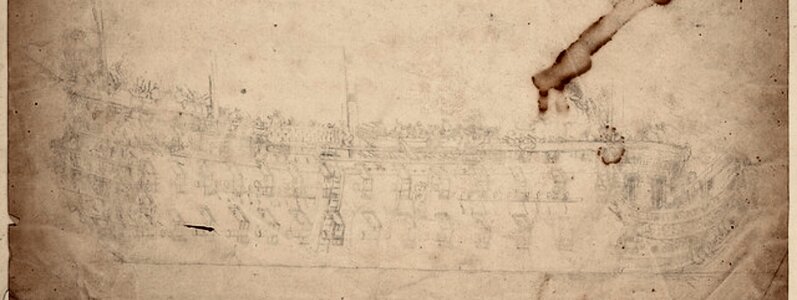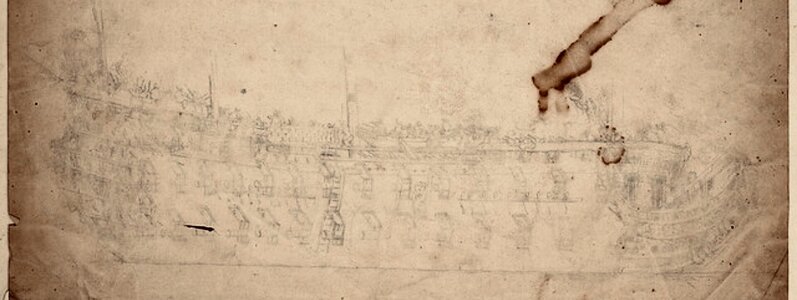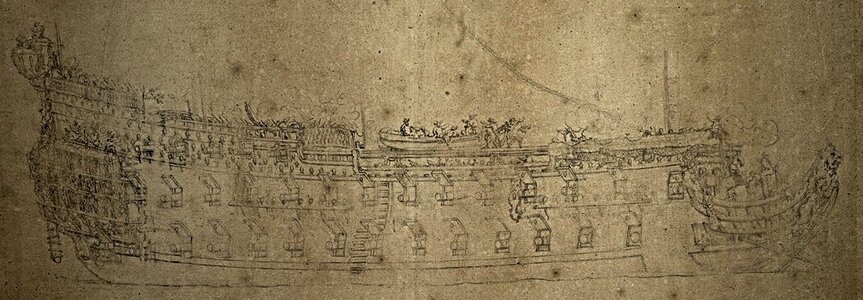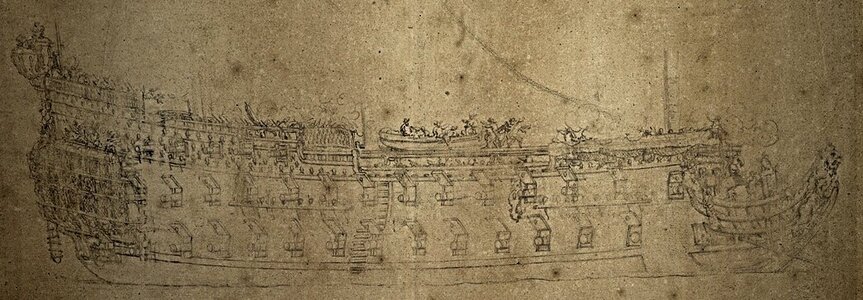There hasn’t been a whole lot of time to put into the ship this past week, as a dear friend from Sweden has been visiting. It has been an extremely social and active time for me.
I have managed to continue detailing the port headrails. This is very time consuming because all of these fine border mouldings have to be cut and fit by hand. I decided that the best course for the middle rail was to affix the top moulding and leave the bottom moulding off until I had fit and secured each section of the bellflower garland:
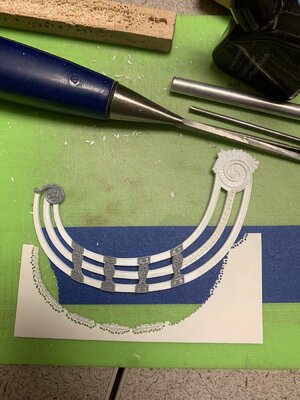
The forward end of the headrails gets an inside bevel so that I will have some glue surface to attach to the upper knee of the head, just behind the figurehead:
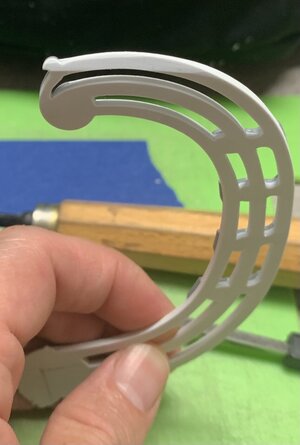
As it stands, I am modeling the bellflower garland. This is, naturally, time-consuming, but the effort is always worthwhile:
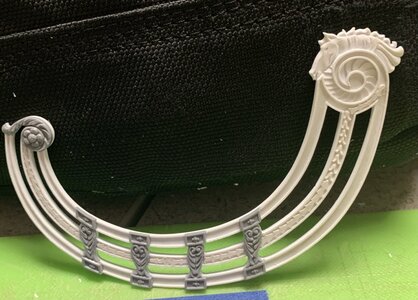
After that is complete, I will make the inside lamination for the horse carving from 1/16” styrene. Most of this figure, as you will see in a minute, rests above the f’ocsle sheer rail. As with the drift-rail serpent ornaments, I want a more 3-D appearance for this carving. It will make a tremendous difference, in the end.
So, at this point, I wanted to really suss-out what my exact headrail positioning will be. It is complicated by numerous considerations and hard realities of the kit. It is impossible to do this perfectly, and according to actual practice of the times. What I can do, however, is prioritize those aspects of the construction that I most want to improve upon.
To that end, I have already lowered the forward scroll below the level of the sprit-mast. Next in importance are the transverse support timbers for the headrails: I wanted to create enough open space for elegantly arching supports, instead of something that was more flatly aligned with the horizon. I think that this spacing provides for that:
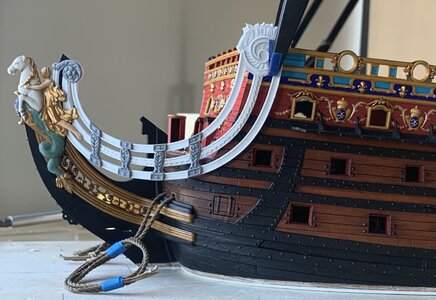
The fundamental problem with the kit architecture is that the forward sheer of the lower main wales rises too dramatically. The whole knee structure of the head should, in fact, be a good bit lower. Consequently, I am having to choose to position the horse carving a little higher on the f’ocsle sheer rail than I would ideally like. I can live with this. There is another important implication concerning the run of the beakhead grating that I will discuss in a moment.
On the plus side, the lowest point of the headrails does not dip below the level of the middle main wales. I also really like the harmonic sweep of the knees and the headrails:
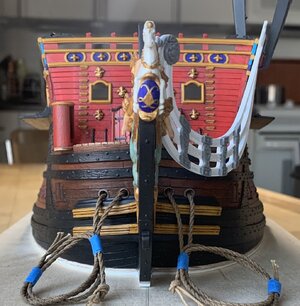
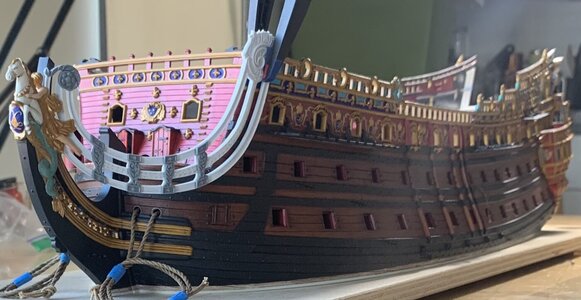
Really keen observers will note that the Berain/Vary drawings show the forward and aft headrail medallions in the same plane:
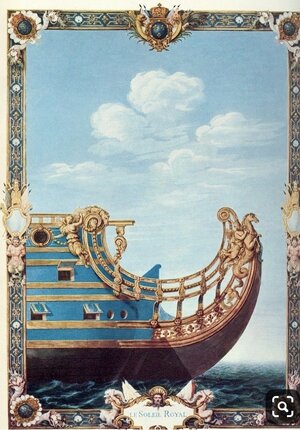
However, super-keen observers will note that both of these drawings mysteriously and completely ignore the presence of the f’ocsle deck, which would have raised the f’ocsle sheer a step. So, I don’t think I am wrong to represent the aft medallion as being in a higher plane.
Although, as discussed, I still find it necessary to incorporate some shape to these headrails, I do not find it to be terribly exaggerated or noticeable:
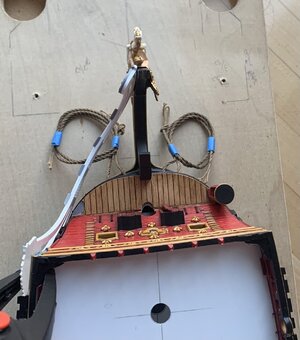
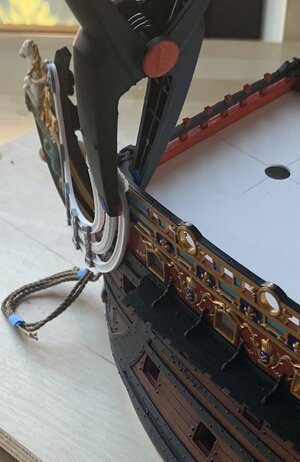
And, finally - the second complication of the abruptly rising sheer of the lower main wales; the beakhead grating on French ships of the period should run behind and follow the curve of the upper headrail. I, on the other hand, have chosen to prioritize the sweep of the headrail support timbers. Consequently, I will run the beakhead grating in-line with the middle headrail:
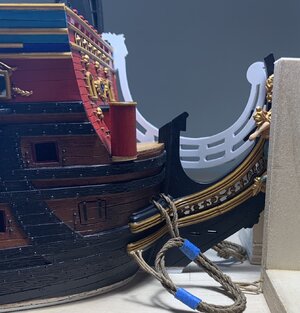
It isn’t exactly correct, but it will make it easy to tuck my new seats of ease between the beakhead deck and the headrails, as Michel Saunier did here:
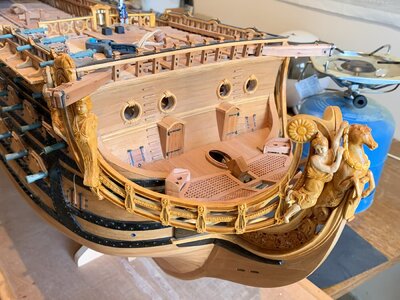
Photo, courtesy of Marc Yeu
Next, I have to pierce the beakhead bulkhead for the cathead timbers, so that I can figure out the ideal placement for the cathead support carvings.
None of this is exactly right or perfect, but considered in its entirely it will be better and closer to the truth than what Heller has presented out-of-box. As always, thank you for stopping by. More to follow…

















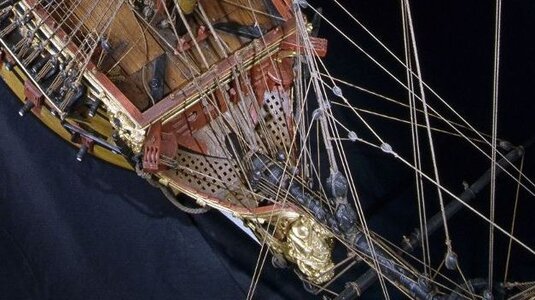
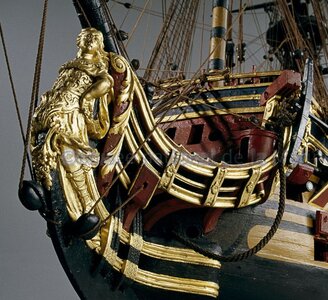
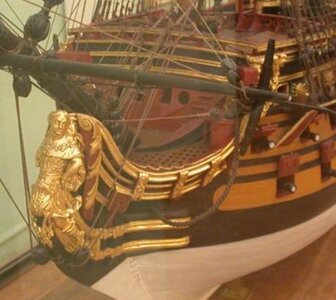
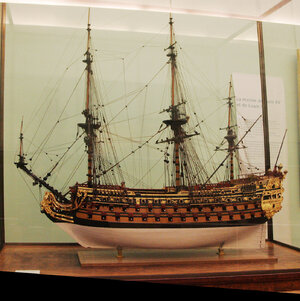


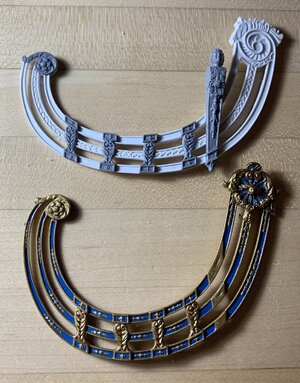
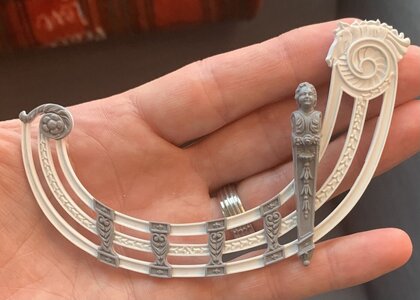
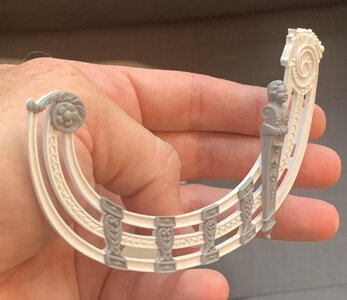
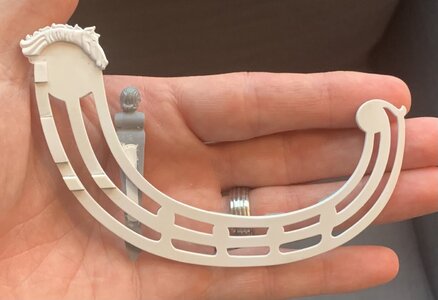
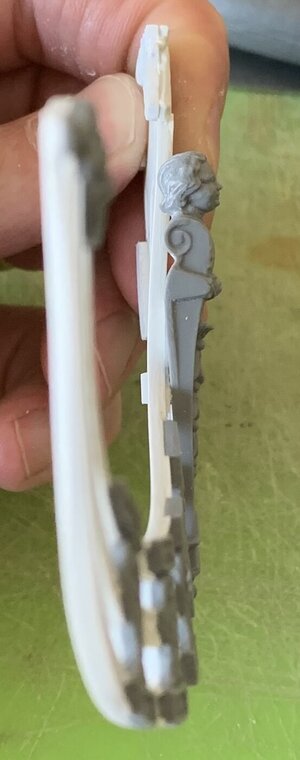
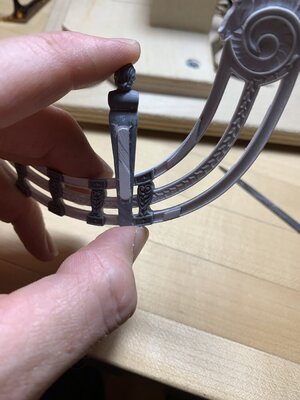
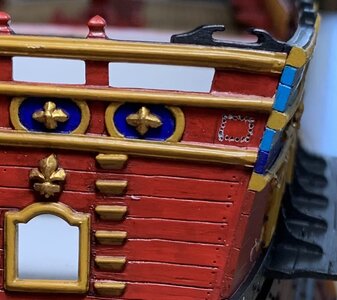
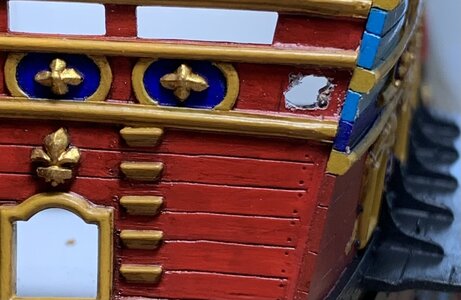
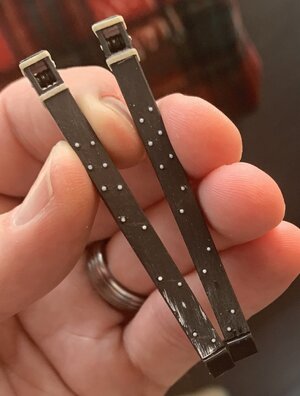
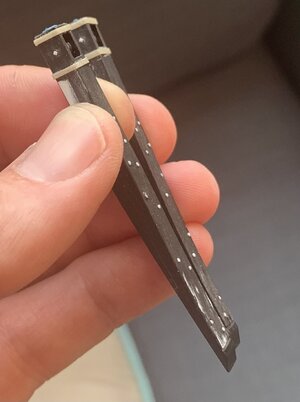
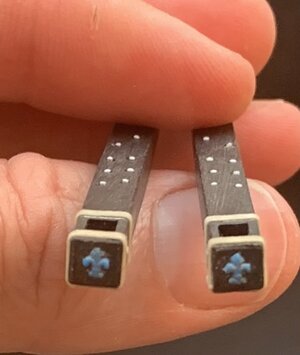
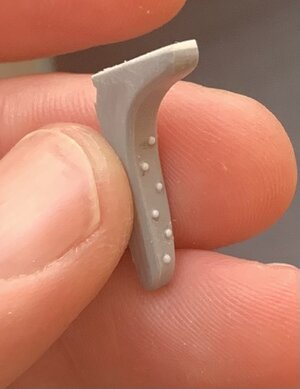


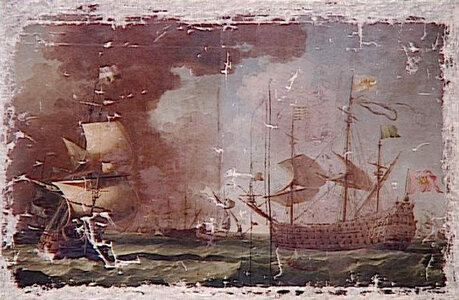
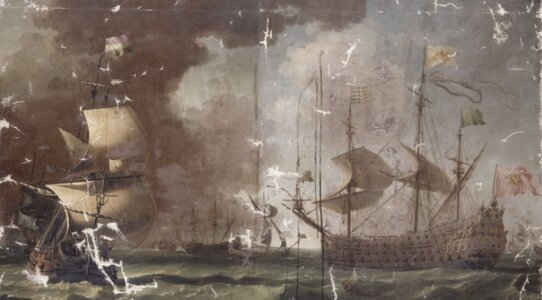
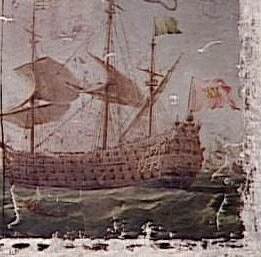
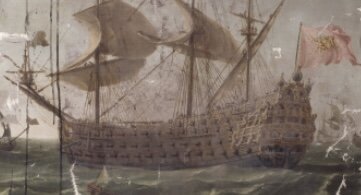
 , now that is really interesting! I still can’t tell whether this is the Royal Louis or Soleil Royal (both pierced for 16, initially, and poop guns are visible, here), but I can at least get a clearer sense for the ornamental tableaux and the structure of the quarter galleries. I can say this, though, the deadworks are not painted white, as was the case for the RL, according to Hyatt in 1677.
, now that is really interesting! I still can’t tell whether this is the Royal Louis or Soleil Royal (both pierced for 16, initially, and poop guns are visible, here), but I can at least get a clearer sense for the ornamental tableaux and the structure of the quarter galleries. I can say this, though, the deadworks are not painted white, as was the case for the RL, according to Hyatt in 1677.